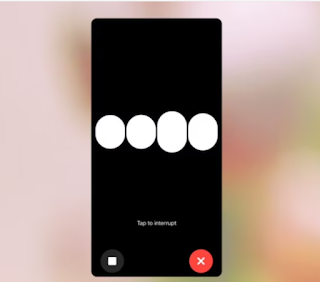AI chatbots like ChatGPT have emerged as invaluable resources for a range of everyday tasks, including the interpretation of complex doctor prescriptions. These advanced tools leverage artificial intelligence to assist users in understanding medical terminology, dosages, and instructions, making them particularly useful in situations where clarity is essential. However, while these applications can provide significant help, users must exercise caution and ensure they verify any output with qualified medical professionals to maintain their health and safety.
ChatGPT stands out for its ability to respond to user prompts in various formats, including text, images, and audio. This versatility allows users to engage with the chatbot in a more interactive manner, making it a practical tool for many situations. Users can simply type out their questions or share photos of documents—such as prescriptions—seeking assistance and clarification. The app is freely available for both Android and iOS devices, significantly increasing accessibility for a wide range of users.
As AI chatbots continue to gain traction as handy virtual assistants for an array of everyday tasks, their functionalities extend beyond merely interpreting prescriptions. They can assist in summarizing lengthy PDFs, creating personalized diet charts, drafting essays, solving complex math problems, generating creative content, and much more. Among these diverse capabilities, ChatGPT proves particularly adept at assisting users in deciphering handwritten prescriptions, allowing them to upload images directly for analysis.
The ChatGPT app, developed by OpenAI, is designed to process text, image, and audio inputs from users. Currently, it is available for download on both the App Store and Google Play, catering to users of iOS and Android devices alike. Once the app is installed, users can take advantage of the photo feature, which enables them to capture and submit images for analysis. This functionality proves especially beneficial when attempting to interpret challenging doctor prescriptions or other complicated medical documents, which often feature illegible handwriting or specialized terms.
For those who have ever found themselves puzzled by a doctor’s handwriting or uncertain about the medication prescribed, the ChatGPT app offers a way to clarify these details effectively. Here’s a detailed step-by-step guide on how to utilize the app for this purpose:
1. **Download the App**: Start by downloading the ChatGPT app from either the App Store or Google Play. After installation is complete, open the app and sign in or create a new user account if you don’t have one.
2. **Upload the Prescription**: Within the ChatGPT app, locate and tap the camera icon to either upload an existing photo of your prescription or take a new one. It’s crucial to ensure that the image is of high resolution and clearly captures the entirety of the prescription, including any handwritten notes or important instructions from the doctor.
3. **Request Interpretation**: Once the image is uploaded, utilize the app’s conversational interface to prompt ChatGPT to read and interpret the prescription. For example, you might enter a prompt such as, “Please read this prescription for me.”
4. **Review the Output**: ChatGPT will analyze the uploaded image and provide a breakdown of its contents, detailing the medication name, dosage, frequency of administration, and any additional relevant information regarding the prescribed treatment. The clarity of the output can vary depending on the legibility of the handwriting in the image.
5. **Ask Follow-Up Questions**: If any details remain unclear after receiving the initial interpretation, feel free to engage further by asking follow-up questions. You might inquire about how long you should take the medication, potential side effects, specific dietary recommendations associated with the prescribed treatment, or any other concerns you may have.
While ChatGPT offers a user-friendly means to interpret medical information, it’s essential to remember that it is ultimately an AI tool, not a substitute for a healthcare professional. The AI may occasionally misinterpret details, especially when confronted with complex handwriting, abbreviations, or specialized medical terminology. Therefore, users should always double-check any information provided by ChatGPT with a healthcare professional before making any decisions related to their health and treatment plan.
In conclusion, while AI chatbots like ChatGPT can significantly enhance the process of understanding and decoding doctor prescriptions, they should be viewed as supplementary tools rather than definitive sources of medical advice. By combining the convenience of AI with the expertise and guidance of qualified healthcare providers, users can make more informed decisions about their health and well-being. Ultimately, while the advancements in technology provide powerful resources for everyday life, it is crucial to maintain a cautious and responsible approach to health-related matters, ensuring that technology complements traditional medical practices rather than replaces them.



